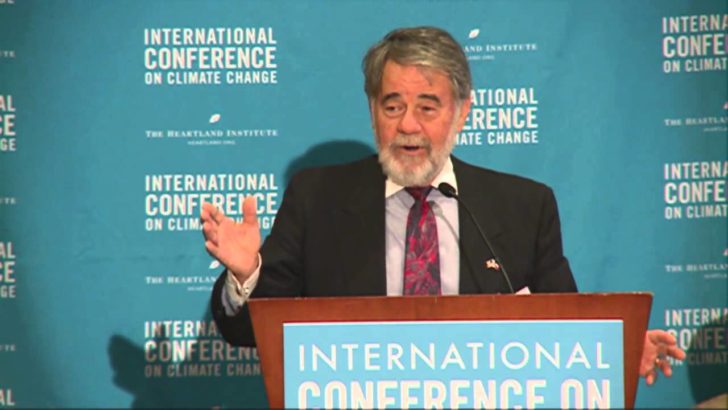“If big government money was taken out of this toxic mix producing bad research, there would be no small association results used to project hundreds of thousands of deaths in America.”

Dr. John Dunn’s just-published letter in Dose Response is below. Click here for a PDF version.
###
Enstrom’s Expose of Air Pollution Epidemiology Problems
John Dale Dunn First Published February 12, 2018 Letter
Dr James Enstrom’s article in the January-March 2017 issue of Dose Response titled “Fine Particulate Matter and Total Mortality in Cancer Prevention Study Cohort Reanalysis” exposes United States Environmental Protection Agency (EPA)-sponsored air pollution epidemiological research misconduct, characterized by a history of using small associations observational epidemiology to project grand claims of hundreds of thousands of deaths from fine particle air pollution. For more than 2 decades, the EPA and its sponsored epidemiologists have used this deplorable method and ignored the rule that dominates the Bradford Hill Rules of proof of causation—the importance of a robust effect as expressed in relative risks (RR) that are at least 2.0 (100% effect) or more. Enstrom exposes the perfidy.
The rules on strength of association (relative risk) are discussed in depth in the chapter on epidemiology of the Federal Judicial Center’s Reference Manual on Scientific Evidence, (National Academy of Sciences Press, 3rd Edition, 2011). The authors of the epidemiology chapter include Leon Gordis, MD, MPH, DrPH, an iconic figure in epidemiology and long-time Chair of Epidemiology at Johns Hopkins University Bloomberg School of Public Health.1
Dr Robert Devlin, senior scientist for the EPA human experiments project of the past 3 decades, admitted in a sworn affidavit filed in a lawsuit in the Eastern District of Virginia that the EPA sponsored human exposure air pollution experiments because the epidemiological research claiming deaths from air pollution sponsored by the EPA was not proof of causation.2
In his sworn affidavit, excerpted here below, Dr Devlin said:
(Para 1) I have been engaged in performing controlled human exposure studies as an EPA investigator since 1986.
(Para 7)…. epidemiological studies do not generally provide direct evidence of causation. They indicate the existence or lack of a statistical relationship between ambient levels of PM2.5 and adverse health outcomes.
(Para 8) Controlled human exposure studies…fill an information gap that cannot be filled by large population studies.
But wait, in September, 2011 US EPA Administrator Lisa Jackson testified to congress that fine particles kill hundreds of thousands of people in America every year, a claim based on EPA epidemiology.3 She said in colloquy with then Representative Markey (D Mass) “If we could reduce particulate matter to levels that are healthy we would have an identical impact to finding a cure for cancer. (pp.H6380)”4 How can the EPA sponsor human experiments ethically and in good faith when they assert publically that fine particle air pollution is acutely lethal, toxic, and carcinogenic?
Dr. Enstrom says:
…the null CPS II PM2.5 mortality findings in this article directly challenge the original positive Pope 1995 findings, and they raise serious doubts about the CPS II epidemiologic evidence supporting the PM2.5 NAAQS. These findings demonstrate the importance of independent and transparent analysis of underlying data. Finally, these findings provide strong justification for further independent analysis of CPS II cohort data.
If big government money was taken out of this toxic mix producing bad research, there would be no small association results used to project hundreds of thousands of deaths in America. Epidemiological researchers on environmental issues and their institutions are providing many United States federal agencies — with what agencies pay for and desire from paid researchers, scientific arguments to justify agency regulatory actions and impress on the country their preferences and ambitious agendas.
Enstrom provides a troubling Stalinesque, Kafkaesque account of how his research was treated by the research and journal community and Dwight Eisenhower warned us of the government/research complex in his farewell speech, for good reason. Government money buys experts to intimidate opposition voices and cow the general public. Jim Enstrom was pursuing his research career at UCLA until he stepped on some toes and was inappropriately attacked and censored for his research.
Follow the money and influence. Science is for sale. Mencken said the goal of practical politics is “…keep the populace alarmed (and hence clamorous to be led to safety) by menacing it with an endless series of hobgoblins, all of them imaginary.”
I thank Dose Response for hobgoblin hunting.
References
- Manual on Scientific Evidence. 3rd ed. National Academies Press, Federal Judicial Center; 2011. https://www.nap.edu/catalog/13163/reference-manual-on-scientific-evidence-third-edition?%20gclid=COiQovXxpNQCFQEIaQod6H4I6A. Accessed May 25, 2017. Google Scholar
- Devlin, R. Affidavit in the case of American Tradition Institute v US EPA. https://www.heartland.org/publications-resources/publications/affidavit-of-dr-robert-devlin-american-traditions-institute-v-us-epa. Accessed May 25, 2017. Google Scholar
- Lisa Jackson testimony before the House of Representatives. September 22, 2011. https://www.c-span.org/video/?c4492073/clip-environmental-protection-agency-oversight. Testimony beginning at 1:50:30 of the hearing. Google Scholar
- Congressman Markey debate on the TRAIN Act in the afternoon Congressional session. https://www.congress.gov/congressional-record/2011/9/22/house-section/article/h6376-2. Google Scholar